|
|
|
|
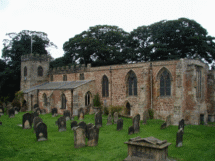
|
| |
| View of the south side of the church from the road leading from
the bridge over the River Tees |
| |
|
The church stands on the south bank of the River
Tees, and is a long, low building built of sandstone,
both colourful and of
good quality. It was mainly constructed in the 14th century,
and has good
buttresses and tracery within the upper parts of the windows. |
| |

|
| |
| The nave and chancel from the west end |
|
|
|
| |
The interior is made interesting by the varying
light which enters through the windows in different parts of the church. The
elevated pew constructed by the Millbank family is also in a very prominent
position on the north side of the nave, together with its private staircase and
the flambouyant (if not ostentatious) tomb beneath. |
|
| |
|
|
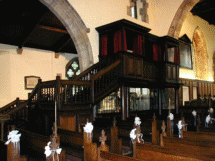 |
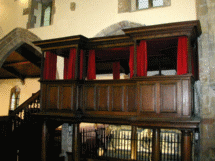 |
| |
|
| The squire's pew, constructed by the Millbank family
|
| |
|
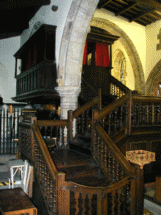
|
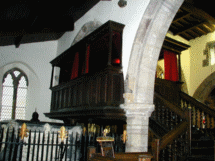
|
|
| |
|
| The rear of the squire's pew showing the private staircase and
tomb beneath |
| |
 |
| |
The three sedilia, or priests' seats, on the south wall of the
sanctuary,
together with a piscina to their
left. All are14th century. |
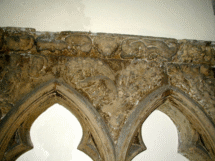
|
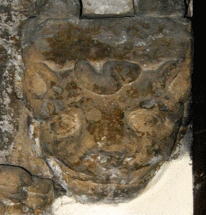 |
| |
|
Detail of the arches over the sedilia,
and the cat incorporated within the carvings at its western
end. |
| |
|
|
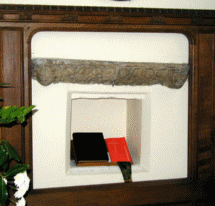
|
| |
| The aumbry on the north side of the altar, showing detail of
the carved 14th-century lintel. |
| |

|
| |
|
Royal hatchment on the north wall of the
chancel. |
There is also a Romano-British sculpture of a local
deity let into the south wall inside the church to the left of the south door,
not shown |
|